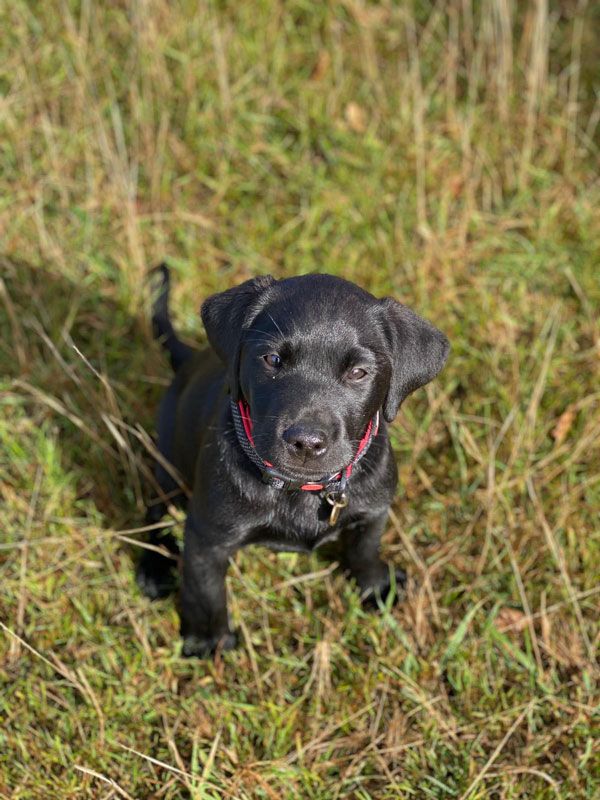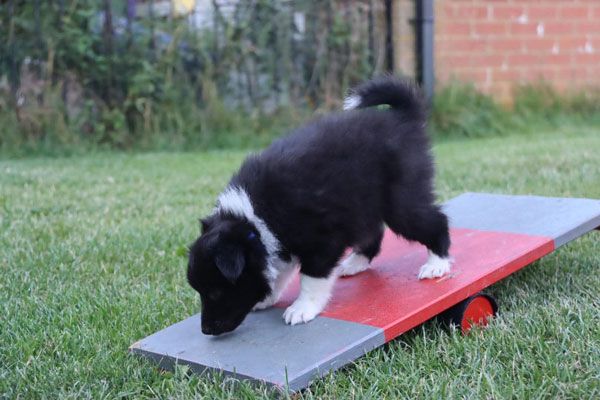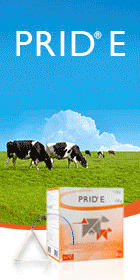Guidelines for exercising pups: separating myths from science
In this article, Dr Siobhan Menzies BVM&S CCRP GPCert(WVA&CPM) MRCVS, founder of HolisticPet, Northern Ireland’s first veterinary pain management and rehabilitation practice, introduces practical guidelines for exercising puppies and young dogs. In addition, Dr Menzies highlights the link between obesity and osteoarthritis and discusses the benefits of regular exercise, as well as the consequences of inadequate exercise
Clients often receive conflicting advice about exercising puppies, including misconceptions like “five minutes of exercise per month of life” or “avoid stairs entirely.” To provide sound guidance, it is crucial to balance the benefits of exercise with the potential risks of inappropriate activity levels.
Comparisons with human development
Guidelines for toddlers emphasise 180 minutes of daily activity, including moderate-to-vigorous play (NHS Physical Activity Guidelines for Children). Similarly, pups require ample movement from a young age to support both physical and cognitive development.
The importance of exercise
1. In relation to physical health
Development: exercise builds strong muscles, tendons, ligaments, bones, and cartilage.
Motor skills: exercise enhances balance, coordination, spatial awareness, and dexterity.
Injury prevention: exercise reduces the risk of injuries and supports recovery.
Weight control: exercise helps maintain a healthy weight and reduces obesity-related risks.
2. In relation to emotional health and well-being
Mental resilience: exercise supports emotional stability.
Feel-good hormones: exercise stimulates endorphin release for positive mood.
Cognitive development: exercise boosts intelligence and memory.
Socialisation: exercise encourages healthy interactions with other dogs and people.
The negative effects of inactivity
Restricting activity can cause:
- muscle atrophy and weakened tendons/ligaments;
- cartilage atrophy or degeneration and joint instability;
- stiffened joint capsules and reduced mobility;
- poor proprioception and balance; and,
- socialisation and behavioural issues.
Regular exercise maintains connective tissue health and functionality.1,2

Research insights
Cartilage health: lifelong regular exercise does not harm articular cartilage, as shown by studies on consistent, weight-bearing activity (load of 130 per cent of their bodyweight, running 3.75 km, five days a week, for 527 weeks).3
Hip dysplasia: off-leash exercise on varied soft terrain for puppies (birth to three months) reduces the risk of hip dysplasia in large breeds.4
Exercise intensity: moderate jogging (4km/day) improves cartilage thickness and stiffness, but running 40km per day for a year caused reduced Glycosaminoglycans content in prominent weight-bearing areas and caused softening of the cartilage. During the study there was no evidence of cartilage damage or degeneration but the softening may reduce the long-term ability of the cartilage to maintain its structural and functional properties.5
Weight management: overfeeding pups increases the risk of hip dysplasia. Lean dogs have a five-fold lower risk of HD and live longer.6 Obesity quadruples the risk of cranial cruciate ligament rupture.7 Long-term reduced food intake lessens osteoarthritis severity.8,9 It is well-established that regular exercise helps with weight control at all ages.10
Osteoarthritis: the biomechanical model for arthritis dictates that it results either from abnormal joint conformation (e.g., elbow or hip dysplasia) or abnormal load or stress on joints (e.g., repetitive high-impact activities). Jarring or high-impact exercise such as repetitive ball-chasing should be avoided especially before joint maturity.11,12
Key message
Genetic predispositions to elbow dysplasia (ED) and hip dysplasia (HD) are unavoidable, but proper exercise and weight management can mitigate their impact. Keeping pups and adult dogs light, fit, and strong is a priority.

Initiate core and limb strengthening exercises after six months of age. Photograph courtesy of Bronagh Walsh BSc(Hons).
Practical guidelines for pup exercise
Physical activity is essential for the healthy development of pups too. From three weeks of age, a pup starts to explore the environment and this movement is necessary not just for the development of its musculoskeletal system by motor stimulation of the brain but also for development of intelligence, memory, socialisation, and emotional resilience. Research shows that physical activity stimulates brain activity. A good breeder will have a play or activity area for a litter of pups to provide both sensory and motor stimulation. The area should provide opportunities to climb, crawl, run, jump, and balance over different surfaces.
1. General recommendations
Pups naturally alternate between active play and rest. For example, an eight-week-old pup may play for 30–60 minutes and nap for one to two hours during the day with eight hours sleep at night. Allow puppies to set their own pace. Overexertion should be avoided.
2. Activity suggestions
Encourage play: teach basic commands (e.g., sit, stay, recall) and engage in interactive games like ‘go find’.
Off lead exploration: provide access to safe, enclosed areas with soft, varied terrain for free movement and adventure walks. The exercise can be off lead or on a loose longline but must be at the pup’s pace. The length of an exercise session can start at 15-30 minutes at two to four months of age and extend to 45-60 minutes at four to six months.
Socialisation: facilitate gentle, supervised interactions with other trusted dogs to promote behavioural and physical development.
Rest period: pups must be allowed to rest, sleep, and recover after exercise.

Photograph courtesy of Licosateria Shetland Sheepdogs, https://licosateria.weebly.com/.
3. Avoid high-impact activities
Avoid brisk walking on a short lead with young pups as this may be concussive and only permits walking or trotting which does not provide enough stimulation for balance, coordination, spatial awareness, and perception to develop.
Refrain from jogging, or cycling with young puppies.
Discourage high-speed, concussive, repetitive activities like intense ball-chasing with launchers.
4. Progressive training
Start simple stretches (e.g., downward dog) at eight weeks.
Introduce core and limb-strengthening exercises after six months.
Initiate endurance training only after growth plates close (seven months for small breeds, 10–14 months for large breeds but also consider the impact of early neutering which may delay growth plate closure to 22 months).

An eight-week-old pup may play for 30–60 minutes and nap for one to two hours during the day with eight hours sleep at night.
Concluding notes
Exercise is vital for healthy pup development, but moderation and appropriate activity selection are key. Always prioritise the puppy’s natural pace, provide adequate rest, and tailor activities to their age, breed, and health status.
Recommended educational resources
For further guidance, check out these excellent resources:
- Vimeo: Training Puppies, https://vimeo.com/ondemand/trainingpuppies;
- My Lame Dog: Puppy Exercise, www.mylamedog.com;
- https://www.vetlessons.com/risk/exercise.
- Oliveira Milani, J.G. et al. (2008) ‘Biomechanical effects of immobilization and rehabilitation on the skeletal muscle of trained and sedentary rats’, Annals of Biomedical Engineering, 36(10), pp. 1641–1648. doi:10.1007/ s10439-008-9542-8.
- Palmoski, M., Perricone, E. and Brandt, K.D. (1979) ‘Development and reversal of a proteoglycan aggregation defect in normal canine knee cartilage after immobilization’, Arthritis & Rheumatology, 22(5), pp. 508–517. doi:10.1002/art.1780220511.
- Newton, P.M. et al. (1997) ‘The effect of lifelong exercise on canine articular cartilage’, The American Journal of Sports Medicine, 25(3), pp. 282–287. doi:10.1177/036354659702500302.
- Krontveit, R.I. et al. (2012) ‘Housing- and exercise-related risk factors associated with the development of hip dysplasia as determined by radiographic evaluation in a prospective cohort of Newfoundlands, labrador retrievers, Leonbergers, and Irish Wolfhounds in Norway’, American Journal of Veterinary Research, 73(6), pp. 838–846. doi:10.2460/ajvr.73.6.838.
- Arokoski, J. et al. (1993) ‘Long-distance running causes site-dependent decrease of cartilage glycosaminoglycan content in the knee joints of beagle dogs’, Arthritis & Rheumatology, 36(10), pp. 1451–1459. doi:10.1002/ art.1780361018.
- Lawler, D.F. et al. (2007) ‘Diet restriction and ageing in the dog: Major observations over two decades’, British Journal of Nutrition, 99(4), pp. 793–805. doi:10.1017/s0007114507871686.
- Adams, P. et al. (2011) ‘Influence of signalment on developing cranial cruciate rupture in dogs in the UK’, Journal of Small Animal Practice, 52(7), pp. 347–352. doi:10.1111/j.1748-5827.2011.01073.x.
- Impellizeri, J.A., Tetrick, M.A. and Muir, P. (2000) ‘Effect of weight reduction on clinical signs of lameness in dogs with hip osteoarthritis’, Journal of the American Veterinary Medical Association, 216(7), pp. 1089–1091. doi:10.2460/javma.2000.216.1089.
- Kealy, R.D. et al. (1997) ‘Five-year longitudinal study on limited food consumption and development of osteoarthritis in coxofemoral joints of dogs’, Journal of the American Veterinary Medical Association, 210(2), pp. 222–225. doi:10.2460/javma.1997.210.02.222.
- Mlacnik, E. et al. (2006) ‘Effects of caloric restriction and a moderate or intense physiotherapy program for treatment of lameness in overweight dogs with osteoarthritis’, Journal of the American Veterinary Medical Association, 229(11), pp. 1756–1760. doi:10.2460/javma.229.11.1756.
- Sallander, M.H., Hedhammar, Å. and Trogen, M.E. (2006) ‘Diet, exercise, and weight as risk factors in hip dysplasia and elbow arthrosis in Labrador retrievers’, The Journal of Nutrition, 136(7). doi:10.1093/jn/136.7.2050s.
- Slater, M.R. et al. (1992) ‘Diet and exercise as potential risk factors for osteochondritis dissecans in dogs’, American Journal of Veterinary Research, 53(11), pp. 2119–2124. doi:10.2460/ajvr.1992.53.11.2119.
Young dogs exercising 3.75km per day five days a week for 527 weeks carrying a load of 130 per cent of their bodyweight demonstrated no harmful impact on their articular cartilage
A. True
B. False
2. Pups allowed off lead exercise on varied soft terrain between birth and three months of age had higher levels of hip dysplasia
A. True
B. False
3. Jogging 4km per day caused cartilage softening
A. True
B. False
4. Obesity increases the risk of cranial cruciate rupture by a factor of four
A. True
B. False
5. Endurance training should be initiated before growth plates close
A. True
B. False
Answers: 1A; 2B; 3B; 4A; 5B.









